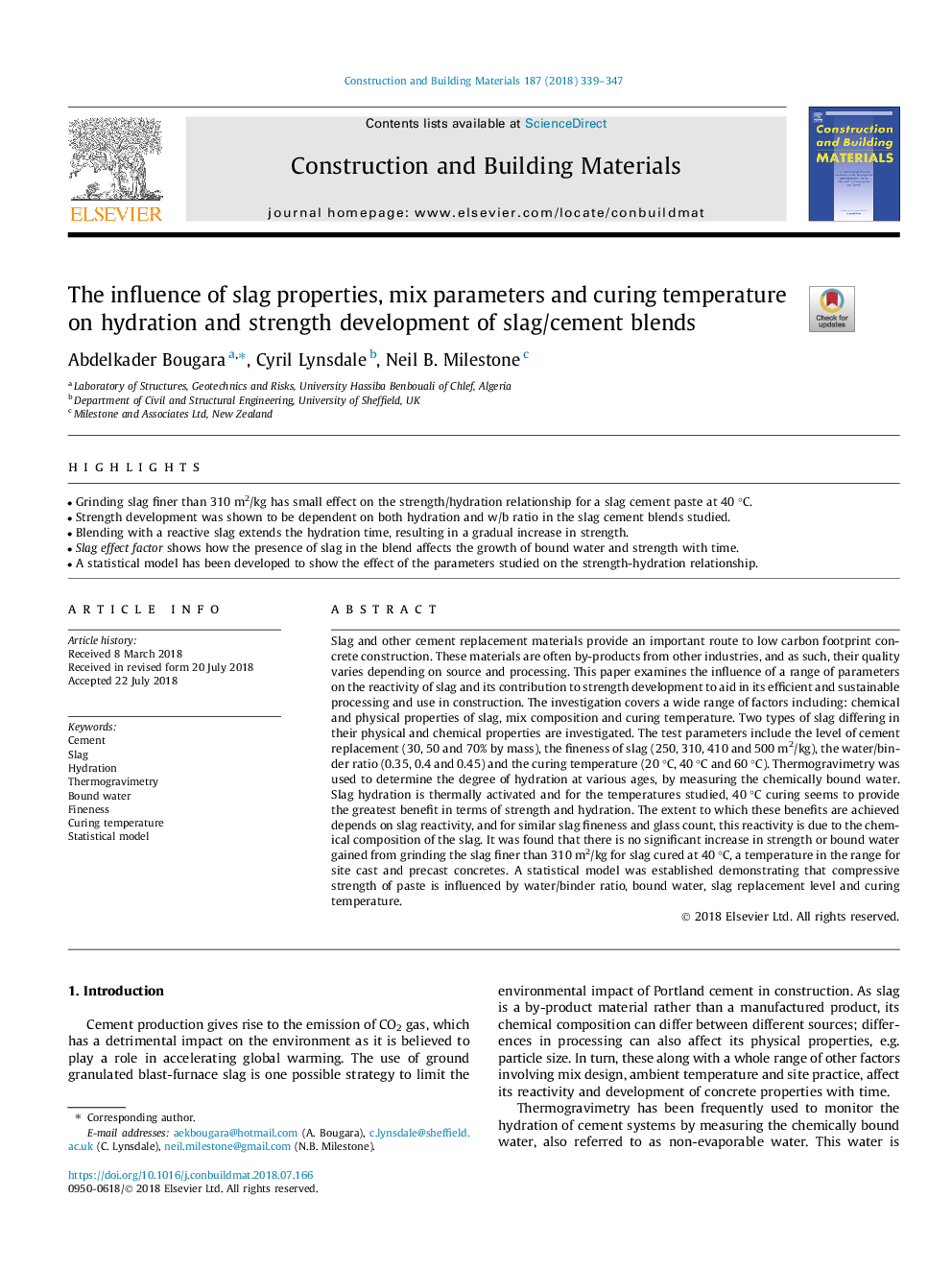| Article ID | Journal | Published Year | Pages | File Type |
|---|---|---|---|---|
| 6711344 | Construction and Building Materials | 2018 | 9 Pages |
Abstract
Slag and other cement replacement materials provide an important route to low carbon footprint concrete construction. These materials are often by-products from other industries, and as such, their quality varies depending on source and processing. This paper examines the influence of a range of parameters on the reactivity of slag and its contribution to strength development to aid in its efficient and sustainable processing and use in construction. The investigation covers a wide range of factors including: chemical and physical properties of slag, mix composition and curing temperature. Two types of slag differing in their physical and chemical properties are investigated. The test parameters include the level of cement replacement (30, 50 and 70% by mass), the fineness of slag (250, 310, 410 and 500â¯m2/kg), the water/binder ratio (0.35, 0.4 and 0.45) and the curing temperature (20â¯Â°C, 40â¯Â°C and 60â¯Â°C). Thermogravimetry was used to determine the degree of hydration at various ages, by measuring the chemically bound water. Slag hydration is thermally activated and for the temperatures studied, 40â¯Â°C curing seems to provide the greatest benefit in terms of strength and hydration. The extent to which these benefits are achieved depends on slag reactivity, and for similar slag fineness and glass count, this reactivity is due to the chemical composition of the slag. It was found that there is no significant increase in strength or bound water gained from grinding the slag finer than 310â¯m2/kg for slag cured at 40â¯Â°C, a temperature in the range for site cast and precast concretes. A statistical model was established demonstrating that compressive strength of paste is influenced by water/binder ratio, bound water, slag replacement level and curing temperature.
Related Topics
Physical Sciences and Engineering
Engineering
Civil and Structural Engineering
Authors
Abdelkader Bougara, Cyril Lynsdale, Neil B. Milestone,
